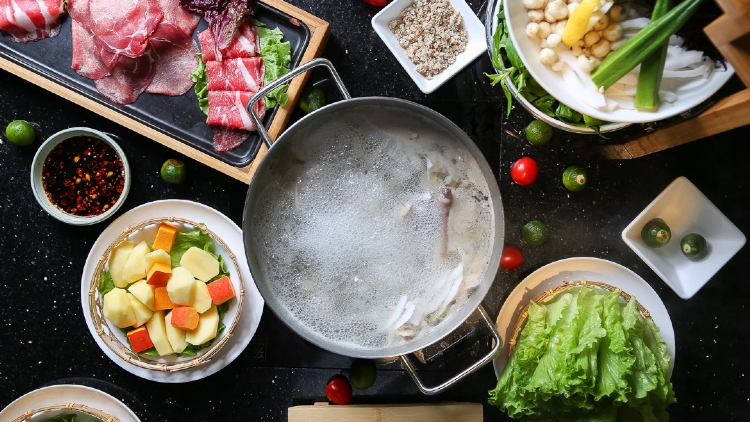
As an island province, Hainan’s cuisine differs from its mainland counterparts through the lightness of its ingredients and less oil-heavy cooking styles – relying more on freshness for flavour than heavy sauces or seasoning. Naturally, much of the cuisine reflects the abundant availability of fish and crustaceans from the surrounding sea, whilst tropical vegetation feature heavily as flavouring agents and soup bases. Because of close proximity and ease of access to Southeast Asia, Hainan’s cuisine has permeated that of neighbouring nations while also borrowing from them. Though the province has four ‘famous’ traditional dishes – Wenchang chicken, jiaji duck, dongshan lamb and Hele crab – Shanghai hosts some of its more memorable, more globally famed eats.
What to eat
Hainan jifan 海南鸡饭
Hainanese chicken rice
Hainanese chicken rice is one particularly far-stretching dish, even standing as an iconic staple of Singaporean cuisine – and when it’s good, it is great. Slices of juicy poached or roasted chicken accompanied by rice rendered incredibly flavourful by being cooked in chicken fat and broth, and paired with essential sides of fresh ground chilli paste and dark soy sauce.
Yezi huoguo 椰子火锅
Coconut hot pot
Though perhaps not quite traditional Hainanese fare, this tropical-style hot pot switches out oily broth for fresh coconut water with a coating of coconut cream, and then gets filled with the province’s Wenchang chicken (which are allegedly raised on a partial diet of coconut) which you dip in a soy sauce, chilli, garlic and calamansi lime juice. Afterward the chicken’s fat flavours the coconut water for a bit, drink the sweet and savoury soup.
Where to eat it
Coconut Taste Second Floor 1008 Huaihai Zhong Lu, near Xiangyang Bei Lu.
Five Star Hainanese Chicken Rice 176 Jiaozhou Lu near Xinzha Lu. Multiple locations across Shanghai.
